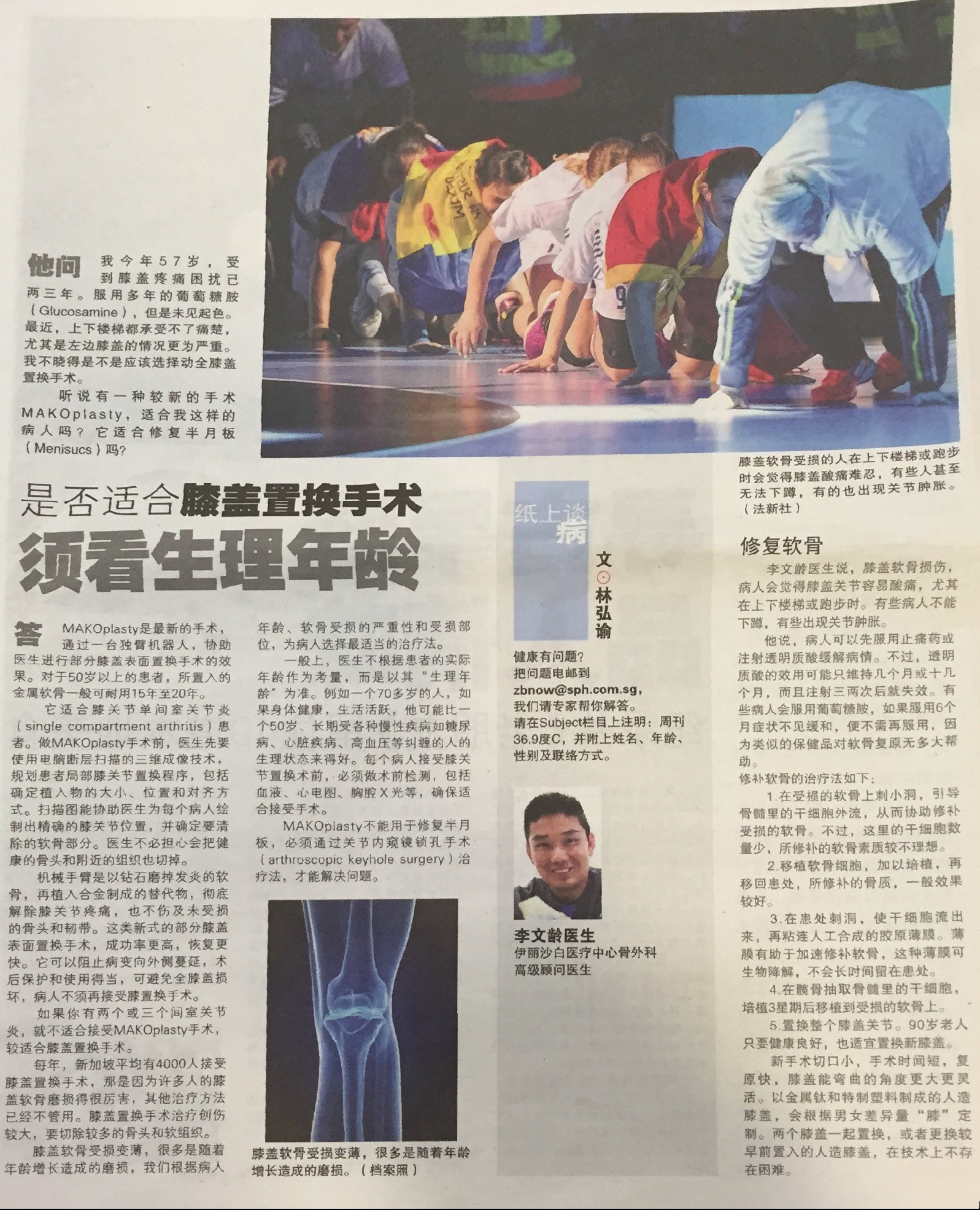Knee Pain and Makoplasty Knee Surgery Query
Dr Kevin Lee answered a Lianhe Zaobao reader’s query on Makoplasty knee surgery. The 57-year-old reader has knee pain for nearly 3 years. This knee pain has been worsening despite him taking Glucosamine and it has recently gotten to a point where it is very painful for him to climb stairs.
Is Makoplasty knee surgery suitable for him to treat his knee pain?
Makoplasty knee surgery is the newest technique using a single robotic arm to help the doctor with partial knee replacement. Makoplasty is suitable for patients with unicompartmental arthritis of the knee.
The orthopaedic doctor would first use CT scan to plan the Makoplasty surgery before operating on the patient using the robot arm. The entire procedure is very precise and effective in treating the knee pain without damaging the healthy parts of the knee joint. Makoplasty’s recovery time is short and can help prevent further damage to your entire knee joint. The replacement can generally lasts 15-20 years for a patient above 50 years old.
Orthopaedic doctors would assess the patient’s age, location and severity of the worn cartilage to decide on the surgery technique to use. The doctor would usually look at the biological, instead of chronological, age of the patient.
Is Makoplasty knee surgery also used to repair meniscus tear?
Meniscus tear requires arthroscopic keyhole surgery to repair, and cannot be treated with Makoplasty.
Repairing Knee Cartilage
For a start, patients with worn knee cartilage can take painkillers or go for Hyaluronic acid injection to alleviate the pain. However, Hyaluronic acid injection is only effective for around 10 months each time and for the first two to three shots. As for patients who take Glucosamine, there is no need to continue its intake if they do not experience any symptom relief after six months.
Other possible treatments following the medications and injections include:
- Bone marrow stem cell treatment
- Platelet-rich plasma therapy
- Knee replacement surgery

